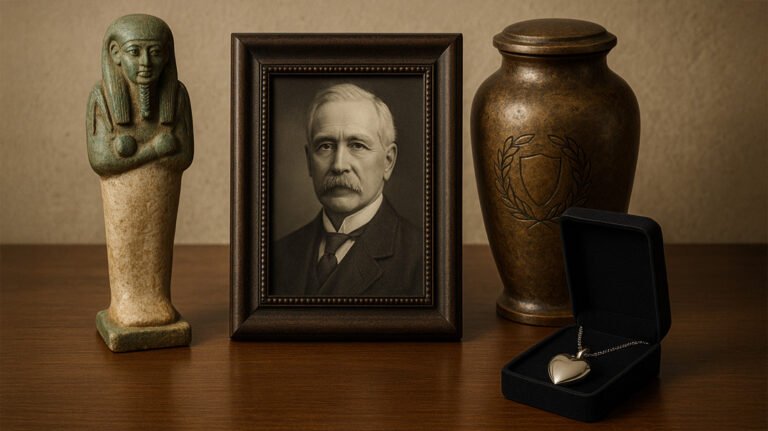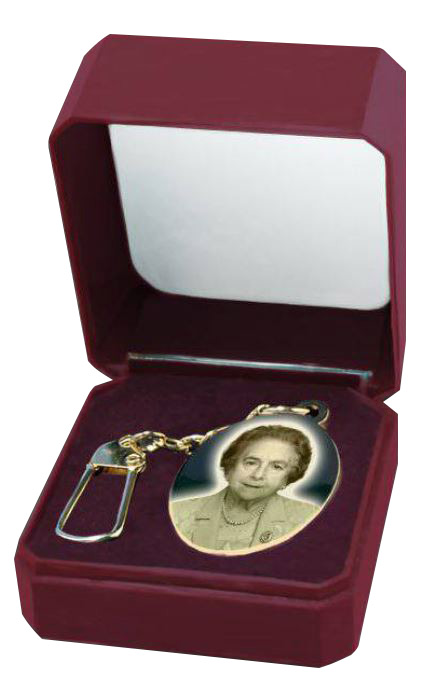Commemorative Objects: Bridging Past and Present

Commemorative objects have long served as tangible links to the past, encapsulating the universal human desire to honor and remember those who have passed. These objects, whether ancient amulets or modern digital creations, reflect cultural values, personal connections, and technological advancements. This article explores the evolution of these meaningful artifacts and their role in preserving the delicate balance between heritage and modernity.
The Origins of Commemorative Objects
Since the dawn of civilization, commemorative objects have played a central role in human rituals. In ancient Egypt, funerary amulets and sculptures accompanied the deceased to symbolize protection in the afterlife. Often intricately crafted, these items were designed not only as spiritual tools but also as lasting symbols of love and remembrance.
In ancient Greece and Rome, funerary urns and engraved steles provided a communal way to honor the deceased. Positioned in public spaces, these objects served as both memorials and testaments to societal contributions. By showcasing the lives of the departed, these artifacts reinforced the importance of shared memory.
Such practices demonstrate that the act of remembrance transcends time. From grand monuments to simple tokens, commemorative objects have consistently been imbued with deep symbolic meaning.
Intimate Memories and Personal Connections
While commemorative objects historically had a collective dimension, their role in personal and familial memory cannot be overlooked. In Victorian England, mourning jewelry—such as lockets containing hair or brooches with miniature portraits—helped individuals maintain a physical connection to loved ones. These objects, often passed down through generations, transformed grief into a tangible and enduring symbol of love.
The 19th-century emergence of post-mortem photography marked another pivotal moment. Families preserved the likenesses of their deceased through portraits, which were often displayed prominently in homes. These images helped to keep memories alive, ensuring the deceased’s presence remained part of family life.
Today, commemorative items such as engraved pendants, keepsake boxes, and personalized urns continue to serve this intimate purpose. They allow individuals to carry a piece of their loved ones with them, bridging the emotional gap between loss and remembrance.
Industrialization and the Democratization of Memorials
The Industrial Revolution ushered in an era of accessibility for commemorative objects. Mass production techniques enabled families from all social classes to memorialize their loved ones through items like gravestones, photographs, and symbolic jewelry.
As industrialization spread, commemorative practices became less centered on religious motifs. A growing emphasis on personalization emerged, with individuals opting for unique inscriptions, decorative patterns, or floral designs on gravestones. This shift reflected changing societal attitudes, where individuality and personal narratives took precedence over traditional, uniform designs.
These changes signaled a new chapter in the evolution of commemorative objects, making them more inclusive and reflective of personal stories.
Technological Innovations in Commemoration
The digital age has brought forth groundbreaking innovations in how we remember and honor loved ones. A significant example is the use of QR codes on gravestones. These codes link to online memorials, where visitors can access biographies, photographs, or videos of the deceased. This technological integration bridges the physical and digital realms, making memories more interactive and accessible.
Another innovation lies in 3D printing, which has transformed the production of commemorative objects. Families can now create highly personalized keepsakes, including sculptures or jewelry that incorporate the ashes of their loved ones. These unique items redefine the relationship between memory and materiality, offering both artistic expression and emotional resonance.
Social media platforms also play an increasing role in modern commemoration. Sites like Histoire De Vie.ca enable users to create digital memorials where friends and family can share photos, messages, and stories. These virtual spaces extend memory beyond physical objects, fostering a sense of collective remembrance.
Commemorative Objects in Global Cultures
Commemorative practices vary widely across cultures, reflecting diverse traditions and beliefs. In China, ancestral tablets serve as a cornerstone of familial remembrance. Often displayed in home altars, these objects maintain a spiritual connection between the living and their ancestors, ensuring continuity within the family.
In Africa, funeral masks are deeply symbolic. Used in rituals to honor the deceased, these masks often represent the cultural and spiritual values of the community. Crafted with care, they are both functional and artistic, serving as enduring links to heritage.
Similarly, in Japan, stone lanterns and Buddhist statues play significant roles in funerary customs. These objects embody respect for ancestors and the cyclical nature of life, blending spiritual and aesthetic elements seamlessly.
These examples underscore how commemorative objects are deeply rooted in cultural identity, serving as powerful symbols of collective memory.
Contemporary Art and the Reinvention of Memory
In the realm of contemporary art, commemorative objects have found new forms and meanings. Artists increasingly incorporate memory into their creations, using unconventional materials and abstract concepts to explore the complexities of loss and remembrance.
Some artists craft sculptures or jewelry using human ashes, transforming these remains into unique works of art. Others create immersive installations, such as holographic displays or interactive video projections, allowing audiences to engage with memories in profound ways.
This fusion of art and memory shifts commemorative practices beyond traditional forms, offering more symbolic and introspective approaches to preserving the past.
Challenges of Modern Commemorative Practices
Despite the growing appeal of modern commemorative objects, they are not without challenges. Digital memorials, for example, raise concerns about longevity and data security. The potential loss of memories due to changing technology or platform shutdowns underscores the importance of integrating physical and digital practices.
Additionally, the rise of excessive personalization risks diluting the collective and symbolic essence of commemorative objects. By focusing solely on aesthetics or interactivity, these artifacts may lose the spiritual and emotional depth that has traditionally defined them.
To navigate these challenges, it is essential to strike a balance that respects both innovation and tradition.
As environmental awareness grows, commemorative practices are increasingly incorporating sustainable approaches. Eco-friendly options, such as biodegradable urns, recycled materials, and memorial tree planting, align with the values of modern families seeking ethical alternatives.
Collaborations between artisans and innovators have also given rise to timeless commemorative objects that blend craftsmanship with contemporary design. These items honor the past while embracing the future, bridging heritage and modernity.
The Timeless Role of Commemorative Objects
Ancient commemorative objects, far from being relics of the past, continue to evolve in response to modern needs. They embody the enduring human desire to remember, honor, and connect across generations.
Whether through the spiritual symbolism of ancient artifacts or the cutting-edge interactivity of digital memorials, these objects remain central to the process of mourning and memory. Their adaptability demonstrates the resilience of human culture in preserving what matters most: the stories and connections that define our lives.
In their fusion of tradition and innovation, commemorative objects stand as powerful reminders of the universal and deeply personal nature of remembrance.
FAQs
What is a commemorative object?
An item designed to honor a deceased person and preserve their memory, ranging from ancient artifacts to modern digital creations.
How are commemorative objects evolving?
They adapt to cultural, technological, and environmental changes while maintaining their role in preserving memory.
What materials are used today?
A variety of materials such as recycled wood, precious metals, integrated ashes, and even digital media.
Can tradition and modernity be reconciled?
Yes, by incorporating technological innovations while respecting spiritual and cultural values.
Why choose eco-friendly commemorative objects?
They offer a sustainable alternative that honors both the memory of the deceased and the environment.
For more information, do not hesitate to contact us, and we will be happy to respond as promptly as possible.









